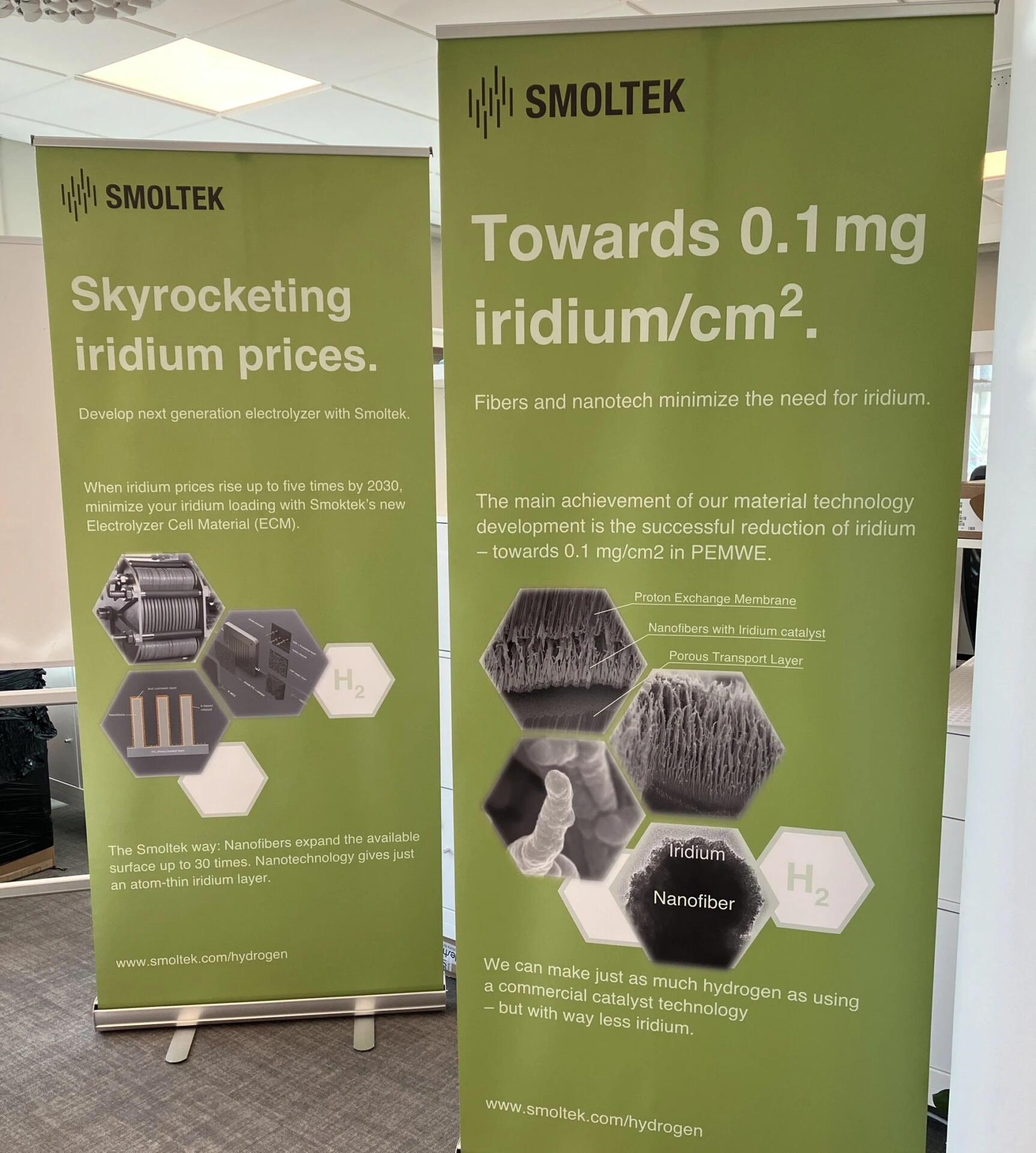Sign up for our newsletter!
Your data will be handled in compliance with our privacy policy.
Your data will be handled in compliance with our privacy policy.

Research paper published in the proceedings at the 244th ECS Meeting in Gothenburg, Sweden. Presentation made by Bastien Penninckx.
Q Li, F Wenger, B Penninckx, X Wen, J Sanchez, Ellinor Ehrnberg • October 30, 2023
Proton exchange membrane water electrolyzers (PEMWE) are a core technology for the future green hydrogen production market. The installed power for PEMWE is estimated to be 40 GW by 2030. The oxygen evolution reaction (OER) catalyst on the anode side is dominated by Iridium (Ir)-based materials, one of the rarest noble metals in the crust of Earth. It is critical to lower the loading of Ir-based catalyst to ≈ 0.1 mg Ir/cm2 without compromising the overall performance to enable the mass manufacturing targets. It is a big challenge due to the poor electrical contact between the resulting catalyst layers and the anode substrate. To reach this goal, Smoltek invented an advanced porous transport electrode (PTE) concept using its proprietary carbon nanofiber (CNF) technology and unique Ir coating technology. An anode porous transport layer (PTL) is first modified by vertically aligned CNFs to increase surface area, followed by coating a corrosion-resistant and conductive layer (e.g. Platinum) and a subsequent OER catalyst layer. Cathodic electrodeposition in a three-electrode static cell was performed for Ir-based catalyst deposition. We demonstrate that with this method, the morphology and deposition process of Ir are controllable at very low loading amounts (≥ 0.1 mg Ir/cm2). An Ir coating layer can be formed on the highly structured CNF-based surface. The electrodeposited Ir has strong adhesion with the CNF PTEs, resulting in a high electrical conductivity.
This unique Ir-electrodeposited CNF PTEs structure maximizes the anode surface area and paves a new way to increase the utilization ratio of catalyst surface at a low loading amount, which makes it a competitive anode material in today’s PEMWE market.
Your data will be handled in compliance with our privacy policy.